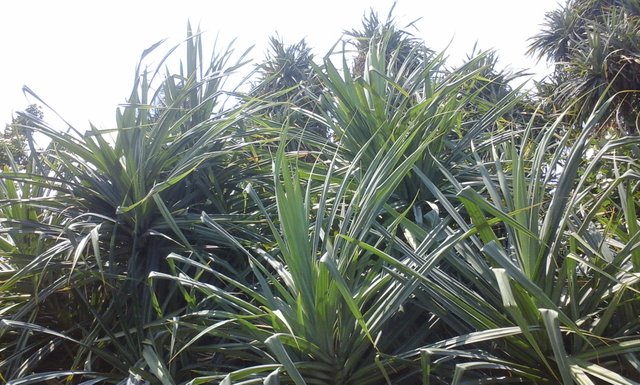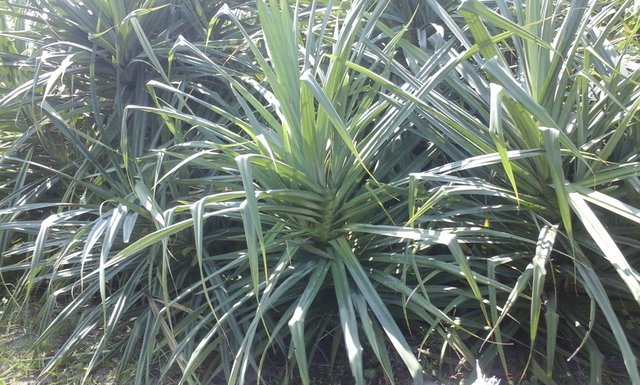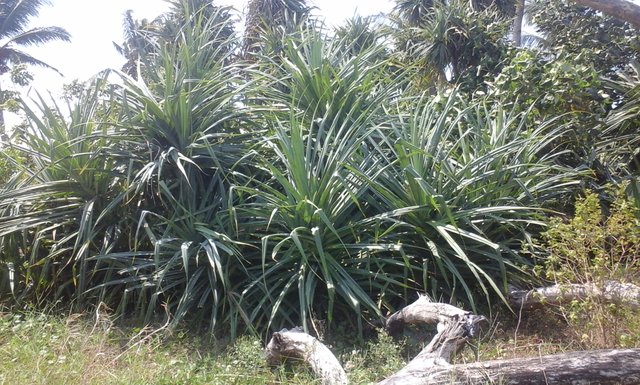
Pandan laut (Pandanus tectorius) is not just an ornamental plant at the edge of the beach, the plant is endowed with immense hujau (evergreen) is also served as a lifeguard. Like mangrove plants, sea pandanus serves as a breakwater, erosion prevention and abrasion. Pandan sea vegetated beaches also serve as turtle nesting spots. So, if we plant pandan sea around the coast of course we have participated as a coast guard.
Pandan laut originated from East Australia and Pacific Islands, so much growing on the beaches of the tropics. Plants that belong to the family Pandanaceae is well adapted to the coastal areas with full sun. In Indonesia these monocot plants can be found on the southern coast of Java Island, the southwest coast of Sumatra and the coast of Sulawesi.

Pandan laut duty to reduce the risk of natural disasters that often occur in coastal areas. Such as erosion, abrasion and stunami disaster that become the scourge of coastal areas. Its large root supports can grip the beach sand, preventing erosion and abrasion. The size of the sea pandan can reach a height of 15 meters and 4 to 8 meters long leaves capable of breaking big waves. At the time of stunami occurring in Aceh, Wetlands International-Indonesia reported areas such as Bakongan, South Aceh that had mangrove vegetation with Rhizopora formation, cypress, dense coconut, and pandan laut suffered less damage than those areas lacking vegetation.
The marine pandanus vegetation on Sukamade beach of Meru Betiri National Park (TNMB), Banyuwangi, East Java has more function than erosion, abrasion and stunami disaster risk reduction. The beach is rarely visited by tourists into the habitat of turtle nesting. Habitat lay eggs in general on smooth and medium sand beaches, with sea shore paved sea vegetation, sea waru (Hibiscus tiliaceus), ketapang (Termenalia catappa) and plants that spread on soil like Ipomea pescapare. Sukamade has such vegetation, so four of the seven kinds of turtles in the world often land here. Green turtle eggs (Chelonia mydas), hawksbill (Eretmochelys imbricata), turtles (Lepidochelys olivacea) and peyu belimbing (Dermochelys coriacea) that landed in Sukamade face many threats. . In addition to hunting from humans, many predators are threatening like wild boar (Sus scrofa) that can dig eggs in the sand after the turtle's parent leaves its eggs. Pandan laut which has serrations on its leaves serves to protect turtle eggs from wild pigs for a while, before patrollers secure eggs to be brought to the semi-natural breeding at Sukamade Resort. Sukamade Resort also pandan sea breeding, so that visitors who come to plant pandan laut on the beach.

Besides the great benefits, planting sea pandan does not require special care. We just need to bring back the polybag that is used in the nursery to not become garbage. If we visit the beach, it would be nice to throw the garbage in its place or bring the garbage temporarily until we meet the garbage so as not to disrupt the growth of marine vegetation such as sea pandanus. When we grow sea pandanus, we have become coast guard from natural disasters and participate in preventing turtle extinction. Let's be the lifeguard just by planting sea pandanus!

just so long ago on this occasion
may be useful.